
More than 100 years ago, the U.S. government build military strongholds along many coastal areas. In Washington State, Fort Casey is a formidable example of the nation’s determination not only to defend itself, but also the use of the latest technological advances in military power.

Fort Casey was part of a trio of such forts around Puget Sound, including Fort Worden in Port Townsend and Fort Flagler on Marrowstone Island. The Harbor Defenses of Puget Sound, as these forts were known, were created because Admiralty Inlet was considered vital to the defense of Puget Sound. And Puget Sound was important to defend because of its access to Puget Sound Naval Station in Bremerton, and also to the ports in Seattle, Tacoma and Olympia.

The ghost fort and adjacent Admiralty Head Lighthouse stand today as a state park on Whidbey Island, and also a historic district in Ebey’s Landing National Historical Reserve.

Fort Casey was operational from 1899 until 1945. It was built for defense, but spent the greater part of its life as a training facility.

What remains are the fortified structures – batteries or emplacements – with their associated functional rooms and towers. There were 10 batteries, each named for an Army officer.
I was curious about who the honorees were, so here they are.
Battery Schenck: Named for Lt. Col. Alexander D. Schenck, U.S. Artillery Corps, who died in 1905.
Battery Seymour: Named for Major Truman Seymour, 5th U.S. Artillery, who gave distinguished service in the Mexican War and Civil War, and died in 1891 in Italy.

Battery Worth: Named for BG William S. Worth, who served with distinction in the Civil War and Spanish-American War, and died in 1904.
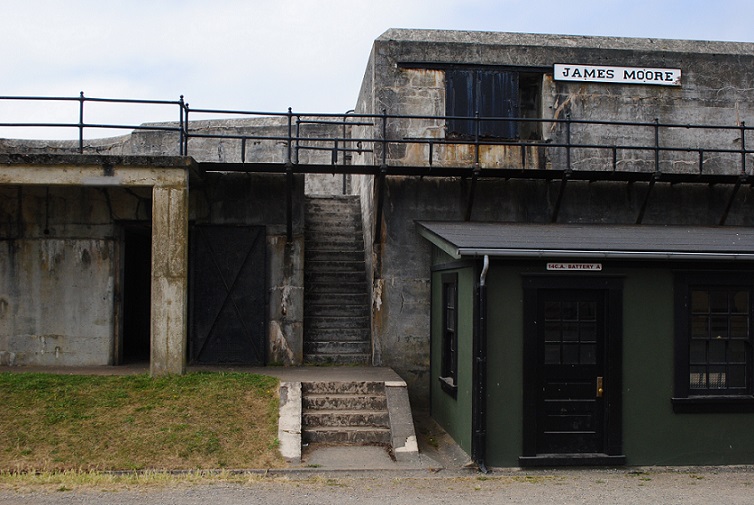
Battery Moore: Named for MG James Moore, Continental Army, who served with distinction in the Revolutionary War, and died in 1777.
Battery Parker: Named for Bvt. 1st Lt. Thomas D. Parker, 2nd Lt., 2nd U.S. Infantry, who was killed during the Civil War in Gaines Mill, Virginia, in 1862.

Battery Kingsbury: Named for Col. Henry W. Kingsbury, 11th Connecticut Volunteers, 1st Lt., 5th U.S. Artillery, who died during the Civil War at Antietam in 1862.
Battery Valleau: Named for 1st Lt. John Valleau, 13th U.S. Infantry, who was killed in Queenstown Heights, Upper Canada, during the War of 1812.

Battery Turman: Named for 2nd Lt. Reuben S. Turman, 6th U.S. Infantry, who died in 1898 at the Battle of Santiago during the Spanish-American War.
Battery Trevor: Named for 1st Lt. John Trevor, 5th U.S. Cavalry, who died in 1864 at the Third Battle of Winchester, Virginia, during the Civil War.

Battery Van Horne: Named for Capt. Isaac Van Horne Jr., 19th U.S. Infantry, who was killed in 1814 at Fort Mackinac, Michigan, during the War of 1812.
Personalized Experience
Visiting Fort Casey today, you are free to wander the grounds and emplacements, and the eerie dark empty rooms that once bustled with purpose.

The mazes of rooms are like catacombs and you never know what you might encounter exploring them.
Luckily, I did not find any creepy spiders, monsters or ghosts. I ventured only as far as the light would stretch.
I had wondered whether some were living quarters, but all the rooms were for supplies and operating other equipment within the battery.

Interpretive signs help you understand how the various small rooms were used in each battery.
Living quarters were located away from the emplacements.
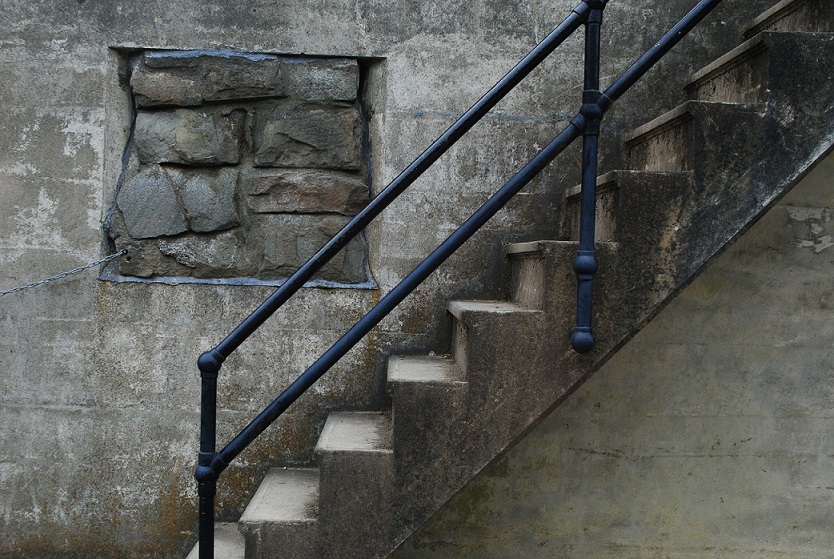
Me being me, I am certain that my experience at Fort Casey was quite different from anyone else’s. From the first battery that I explored, my eyes were instantly drawn to the artistic patterns of minerals leaching out of the concrete walls – efflorescence.
Other folks no doubt just passed by this vacant scene. But I found a treasure trove, and spent a lot of time photographing my finds.

Exterior walls brought to mind landscapes, with mountains and rivers undulating across them, while interiors presented galleries of waterfall-like patterns.

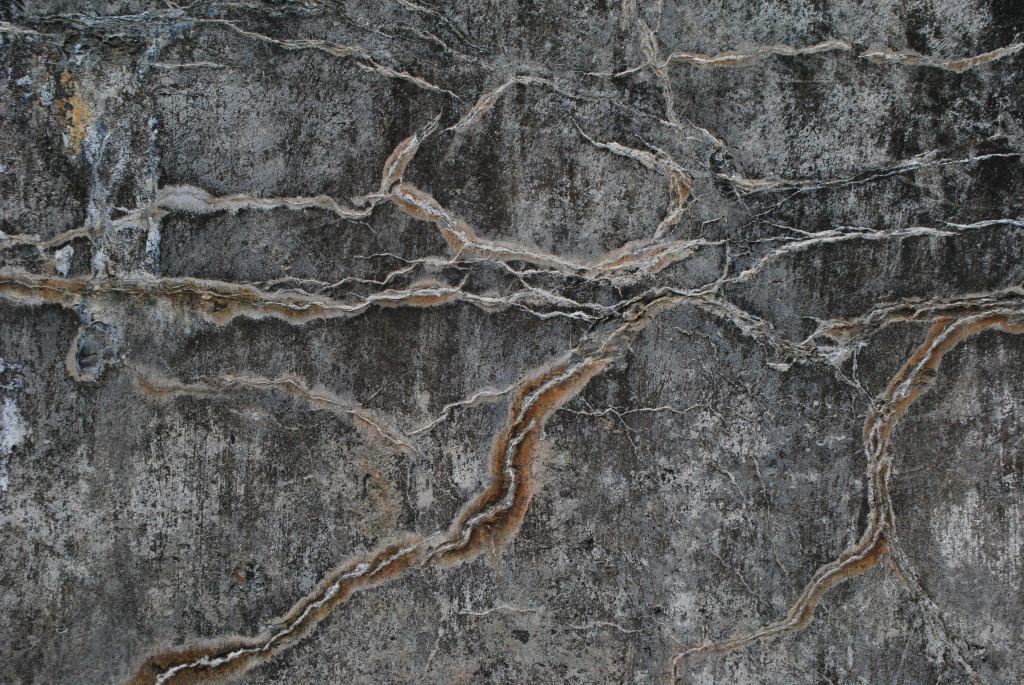
At the same time families were moving through and children were delighting in screaming in the tunnels, I was focused on the art of the concrete, shapes, and light and shadows.




As I moved through the batteries, I also tried to imagine the manpower involved in operating and maintaining the fort. This was not today’s Army! The crowning glory in the fort’s heyday was without doubt its two 10-inch “disappearing” guns.
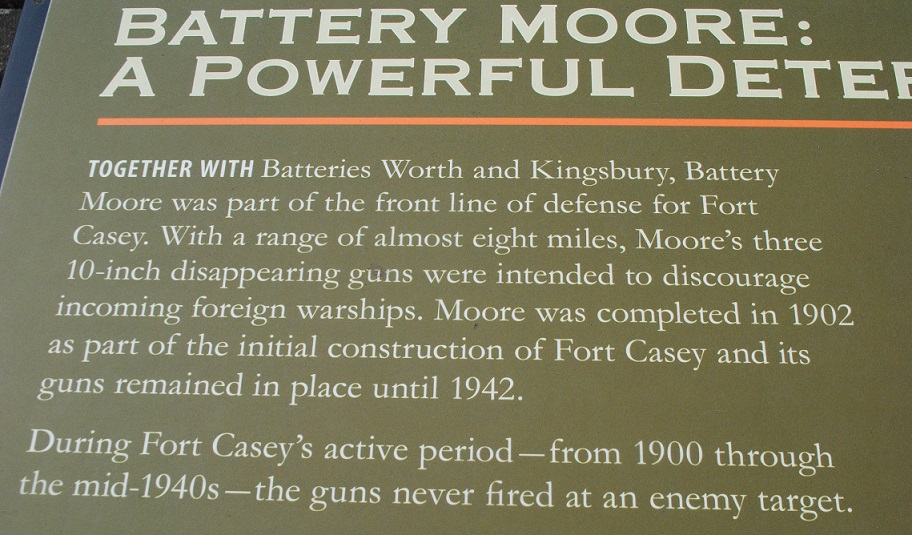

These large cannon-like guns were state of the art in the early 1900s. They could be raised and lowered as necessary, ensuring that they would not be detected when lowered below the battery walls. Note: The two 10-inch “disappearing” guns seen in Trevor and Worth batteries are not the original ones, but similar versions brought back from Fort Wint in the Philippines, where they had been used in defense of Subic Bay.
It’s dizzying to imagine how it would have been under a real attack, with “all hands on deck” at all the batteries. Hundreds of soldiers hurrying, shouting, hauling ammunition, loading the guns, noise and smoke.
The First War
As impressive as these Puget Sound forts were when they were built, technology soon advanced and warships and airplanes made the big guns obsolete. During World War I, Fort Casey was a training facility, readying soldiers for battle in Europe.
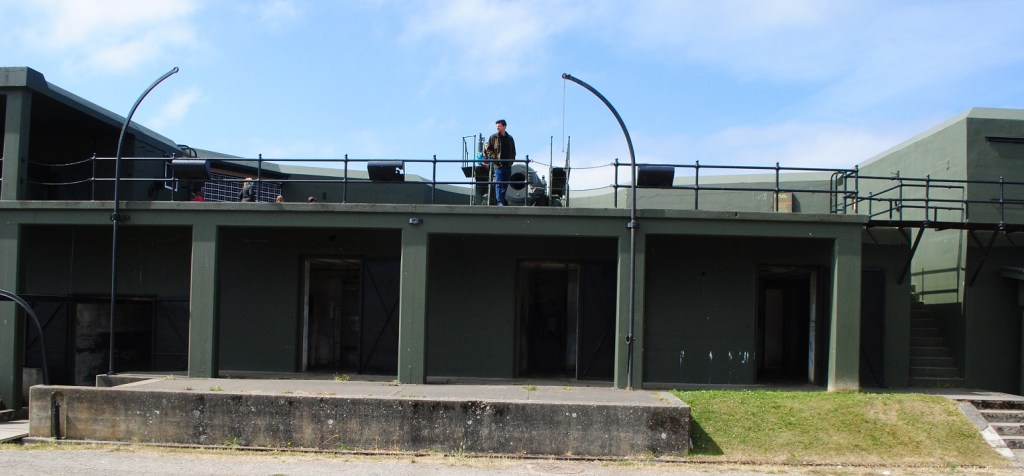

When the war ended, the fort was kept under “caretaker” status, and the artillery was removed.
The facility was still used for training for the National Guard and Army Reserve officers. There were officers quarters, enlisted barracks, an administration building, hospital, gym, fire house, commissary, exchange, bakery, and stables.
The Next War

But, as things go, a couple decades later, Fort Casey was called up for service again. As the U.S. was entering World War II, the Army reactivated the fort as an induction center and troop training facility. The old emplacements were outfitted with new anti-aircraft guns.
After this war ended, the fort was vacated and fell into disrepair. The old iron doors looked Medieval to me. The whole place could serve as a great movie set.




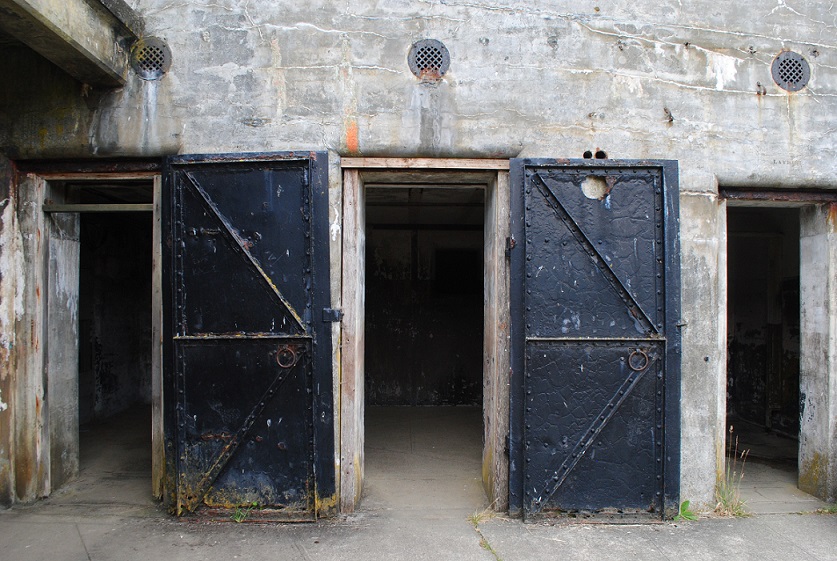
Finally, in 1953, it was officially deactivated. Two years later, the state of Washington acquired the property for a state park, and Pacific University acquired the administrative buildings and housing to create Camp Casey Conference Center, which you can see today.
Admiralty Head Light
Just up hill from Fort Casey stands Admiralty Lighthouse. It wasn’t always where it is now. A navigational light at this location predates Fort Casey, but when the fort was on the drawing board, planners realized the light would was going to be in the way, so it was relocated. However, the original structure no longer exists.

The lighthouse you see today was finished in 1903, with an Italianate Revival design. But in time, as happened to Fort Casey years later, the usefulness of Admiralty Head Light was less than desired. In 1922, the lighthouse was deactivated, in favor of the navigational effectiveness lighthouses at Point Wilson and Marrowstone Point.

Admiralty Light stands 30 feet high. The building was constructed with thick walls to withstand concussions from the fort’s guns and earthquakes. Its fourth order Fresnel lens was removed in 1927 and installed at the New Dungeness Lighthouse.




Terrific post, Joan. Loved the history and the photographs are wonderful, both the architectural and abstracts. Enjoyed this one very much!
LikeLike
Wow, thanks! That’s high praise.
LikeLike
Well deserved. You’re showing a very good eye.
LikeLike
The fort reminds me of a similar fort in Finland I visited. There must be whole area of military design for forts like these.
Did you travel up by car and then across by ferry (I suppose there is a ferry?) or is there a boat that goes all the way from Seattle?
LikeLike
That’s interesting. There could be similar designs during that period of time. In Death Valley National Park there are stone “beehive kilns” that were used to make charcoal. I’ve seen similar designs used in other countries. Yes, I did take a ferry to Whidbey Island, by car. One can walk on to our ferries too, then perhaps take a bus to their destination. This particular ferry goes from Edmonds, north of Seattle, to the island. Takes 20 minutes to cross, about 20-30 min. to drive to Edmonds.
LikeLiked by 1 person
“Luckily, I did not find any creepy spiders, monsters or ghosts. I ventured only as far as the light would stretch.”
Smart move Joan, no telling what was in the deep dark. Loved the patterns you saw, like the shadow left on the opposite wall of a three-tiered hand rail. Enjoyed the visit very much
LikeLike
Thanks! I had a very good time there. I need to visit the other forts.
LikeLike
Joan, thank you for a great Fort Casey post! I first visited there as a kid in the 1970’s. Your post is beautiful and informative!
LikeLike